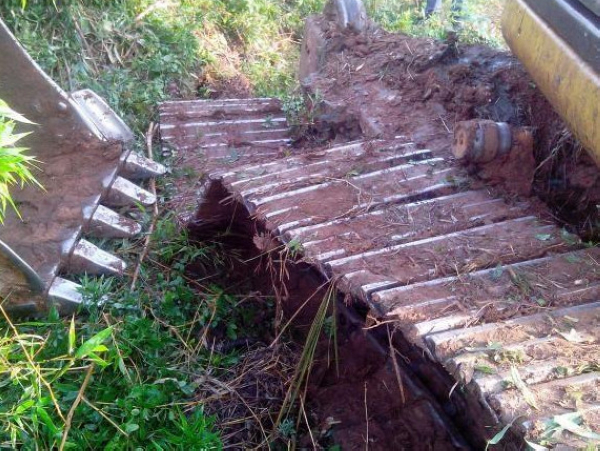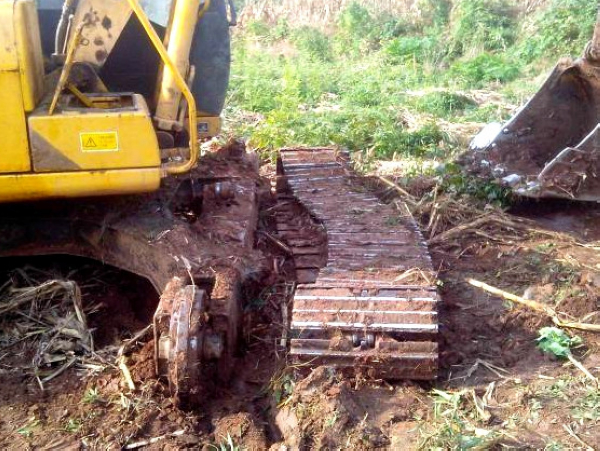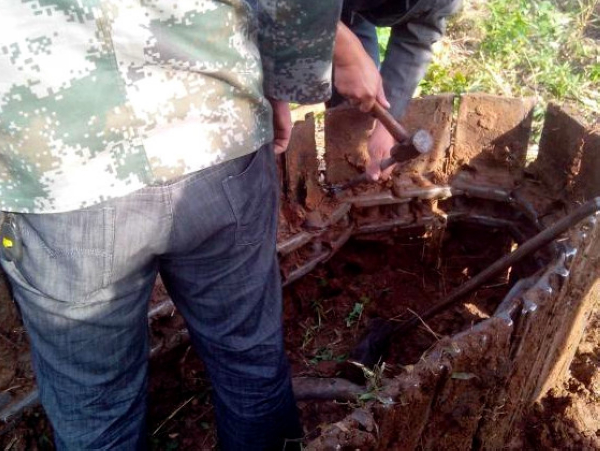> Overview: News
> Overview: Service
> Overview: About
Excavators often experience chain drop
issues during operation, which means the tracks come off. This is especially
common for older machines. So, what should be done if an excavator has a chain
drop?
Installation Tip 1: Precise Alignment and
Gradual Adjustment
When all the tracks on one side of an
excavator fall off, follow these steps for installation. First, align the drive
wheel properly, use the bucket to lift the upper track, and ensure that the
drive wheel is accurately aligned and enters the track. Then, get off the
machine and use tools such as iron rods to carefully adjust, aligning the drive
teeth with the upper idler wheel. At this point, one-third of the installation
work is completed.
Next, lift the machine to make it move on
one side, keeping the tracks straight. Lift the machine again and get off to
adjust the lower track, trying to align the support wheels with the track as
much as possible when the track is lowered. This step is often overlooked by
operators, but it has a significant impact on the normal operation and service
life of the tracks. After completing this step, two-thirds of the installation
work is done.
Finally, gently lift the excavator with the
bucket and use the bucket teeth to hook the track, allowing the guide wheel to
enter the track. Then, carefully adjust the track to align it with the guide
wheel. Next, rotate the track and add grease. At this point, the track assembly
is complete and the excavator can resume normal operation.

Installation Tip 2: Skillful Use of Tools
and Coordinated Operation
Another method for installing the tracks
also has its unique advantages. First, turn the chain's live pin joint to the middle
height at both ends and use a tool to knock it out. At this point, the track
plates can be laid flat in a straight line. Then, operate the excavator to move
unilaterally directly above the tracks.
During this process, an iron rod is needed
to "guide" the track plate to the correct position. Start assembling
from the drive wheel, place the iron rod under the track plate, lift the
machine and rotate the track. At the same time, arrange one person to operate
the walking in the cab, lift the track and rotate it forward while it passes
through the upper idler wheel and walks to the position of the guide wheel.
Place an object at the guide wheel as a
support, then connect the two sides of the track, and install the live pin
shaft to complete the installation. This method is also applicable to the
assembly of rubber tracks, but due to the aging of the live pins, it is
difficult to knock them in, and even welding and cutting equipment may be
required to complete the assembly. Therefore, it is generally not recommended.

Experts in construction machinery
maintenance point out that mastering the correct installation techniques for
excavator tracks not only boosts construction efficiency, reduces equipment
downtime, but also effectively lowers maintenance costs and extends the
equipment's service life. When construction workers encounter issues with
excavator tracks coming off, they can choose the appropriate installation
method based on the actual situation and strictly follow the operation steps to
ensure the installation work is completed safely and smoothly.

2025-01-21
2020-07-08
2020-08-24
2020-01-21
2019-12-25
2019-11-01
2021-02-01
2020-10-26
2021-01-14
2020-12-11
2020-07-04
2020-09-30